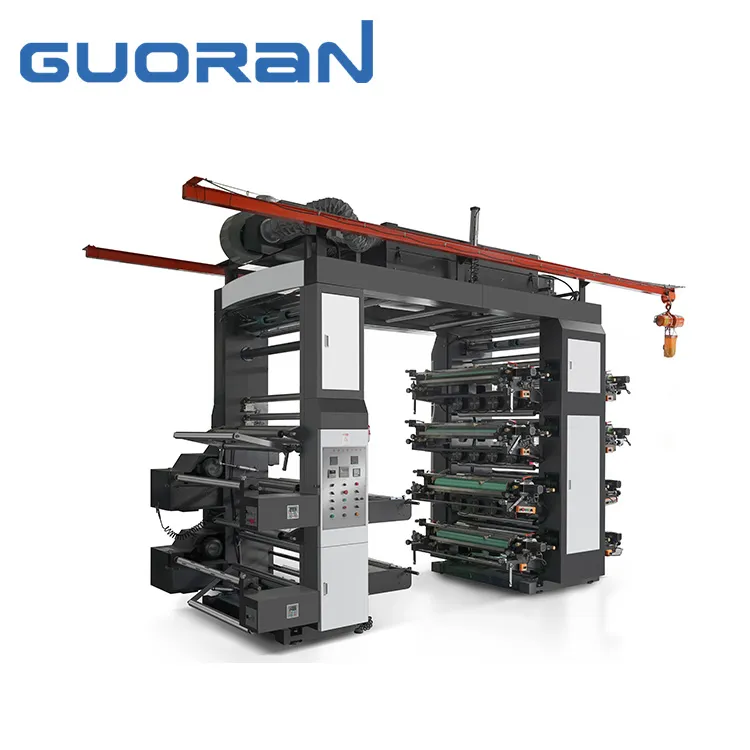Selecting the Right Printing Machine for Cost-Effective Printing Projects
2024-10-26
In the world of professional printing, balancing cost and quality is essential. From small print shops to large-scale printing facilities, every business faces the challenge of selecting printing equipment that meets customer expectations without overspending. The printing machine itself — whether digital, offset, or large-format — plays a central role in this balancing act. In this blog, we will break down the factors that determine how your choice of printing machine can impact the overall cost of a project, guiding you toward a more profitable and efficient printing operation.
The Printing Machine Spectrum: Offset, Digital, and Large-Format Printers
Choosing the right printing machine depends largely on the nature of the print job, including print volume, turnaround time, and desired quality. Here’s a look at how each type of machine affects costs:
1. Offset Printing: Best for high-volume printing due to its cost-effectiveness, this traditional method uses metal plates to transfer ink onto paper. Offset presses require significant setup and materials but are economical for bulk orders, making them ideal for businesses with high-demand, consistent print needs.
2. Digital Printing: With minimal setup time, digital printers are perfect for small to medium-sized projects, offering flexibility for on-demand printing. While unit costs are higher than with offset printing, digital machines allow businesses to run cost-efficient short jobs, avoid storage costs, and provide customization.
3. Large-Format Printing: Large-format machines cater to specialty jobs like banners, posters, and displays. While these machines have specialized uses, their ability to print on diverse media at high resolutions justifies their costs in visual and promotional projects.
Selecting a machine based on project volume, job frequency, and media type is the first step to managing printing costs effectively.
Key Cost Factors Affected by Printing Machine Choice
1. Setup and Material Costs:
- Offset Presses: Have high setup costs, requiring custom plates for each color, which add to the cost. However, these machines become cost-effective over long runs, where the setup cost is spread across numerous copies.
- Digital Printers: Require little setup, saving time and labor costs. Digital printing is ideal for variable data printing, which is not possible with traditional offset printing, and eliminates plate-making costs.
- Large-Format Printers: Require specialized ink and media, increasing material costs but offering valuable versatility for businesses handling high-quality visual projects.
2. Labor and Operational Efficiency:
- Labor Costs: Digital printers are relatively labor-efficient, whereas offset presses require skilled operators, especially for large-scale projects. Automated digital printers can often handle multiple jobs simultaneously, saving on labor.
- Maintenance and Downtime: Digital printers have lower maintenance needs, reducing unplanned downtime. Offset presses require frequent maintenance to avoid costly disruptions in high-demand environments.
3. Quality and Waste Management:
- Quality Standards: High-resolution digital and large-format printers can meet demanding quality standards without producing as much waste, lowering reprint costs.
- Waste Reduction: Digital printing produces minimal waste compared to offset presses, which can generate excess paper waste during setup. Selecting machines with low waste outputs helps minimize disposal costs and support eco-friendly initiatives.
4. Cost Per Print:
- Offset Printing: Delivers the lowest cost per print for large volumes, making it cost-effective over the long run.
- Digital Printing: Has a relatively higher cost per print for large volumes but remains cost-efficient for low-quantity, customized jobs, allowing businesses to meet individual customer needs affordably.
Practical Tips for Choosing a Cost-Effective Printing Machine
1. Assess Project Types and Frequency: For businesses that handle a mix of small and large orders, having both digital and offset machines can optimize costs. Digital printers cater to small, quick-turnaround jobs, while offset presses handle bulk jobs at lower costs per print.
2. Invest in Versatility for High-Value Projects: Companies that frequently handle promotional materials, banners, and posters can benefit from a large-format printer, which offers the flexibility to take on high-margin projects.
3. Plan for Maintenance and Consumables: Budgeting for consumables like ink, toner, and paper can prevent hidden expenses. Choose machines that support long-term maintenance programs and have readily available parts and supplies.
The choice of printing machine directly impacts the total cost of a printing project by influencing setup expenses, operational efficiency, waste, and per-print costs. By carefully aligning your machine capabilities with your project needs, you can control costs, deliver quality prints, and meet project timelines without overspending. Investing in the right technology ensures that your printing projects are profitable, efficient, and deliver exceptional results.



